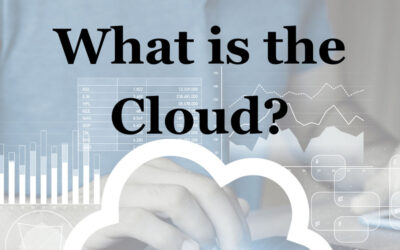It can be argued that your organization isn’t considered “modern” without taking advantage of truly modern technology solutions. This includes the cloud, which provides anytime-anywhere access to important information or products. This type of access–also known as Product as a Service–can help your budget by eliminating large up-front costs in favor of smaller payments more regularly. This might seem ideal for your organization, but we urge you to take a step back and think about the solution before accepting terms of service without looking for extra hidden costs.
A study performed by Research in Action asked 468 CIOs all about their cloud usage and the costs that come with them. The majority agreed that cloud investment was one of the biggest expenses that their organization had, which only seemed to feed into the consideration that any additional expenses can add up in the long run. These CIOs also found that most of their concerns over hidden costs were made up for by the sheer quality, quantity, and reputation of the vendors. Here are some of the issues that were considered during this poll:
- Having to put forth more effort to properly manage vendors, and their corresponding Service Level Agreements (SLAs).
- Bottlenecking and the impact poor cloud performance could have on brand perception, productivity, and customer support.
- The increased cost of solving complex problems inside cloud environments.
Whether or not these concerns are justified is another issue altogether. While they might be difficult to measure, they are certainly issues that need to be addressed in some way, shape or form. Many organizations simply don’t have the solutions to adequately determine how much the cloud is costing them. Many of these companies are simply using dated systems that track their cloud performance, limiting the amount of information that can be tracked.
Costs of Scalability
Some businesses also have trouble scaling their cloud solutions to the point where the organization benefits most. This happens when you’re spending too much on cloud services you don’t need, spending too little and creating an operational deficiency, managing and administering the cloud in a way that doesn’t create a profit for your organization. You need to understand how much space and and processing will be required of your organization so that it can handle your cloud requests, as well as the flexibility needed to ensure change can be made easily enough. What it amounts to is understanding how your business’ cloud technology handles its bottom line.
Knowing When You’ve Gone Too Far
The cloud is nice for business purposes, but without taking a closer look at your finances, it’s easy to forget how much you actually use the cloud. Look at your personal use of cloud services as an example. If you use Netflix, Hulu, Spotify, and other cloud-based services, while they are all relatively cheap, they can add up and cost you a considerable amount of money.
Depending on your business’ specific needs, you’ll need various cloud services that will vary by industry. How will your organization use the cloud? To find out, reach out to us at (508) 453-4700.



